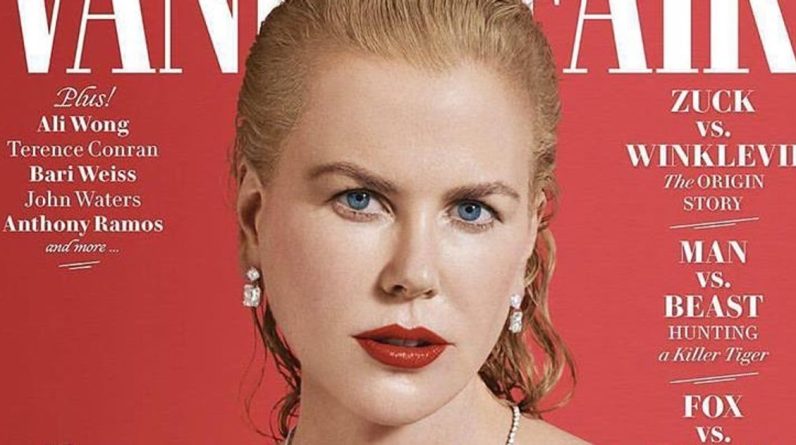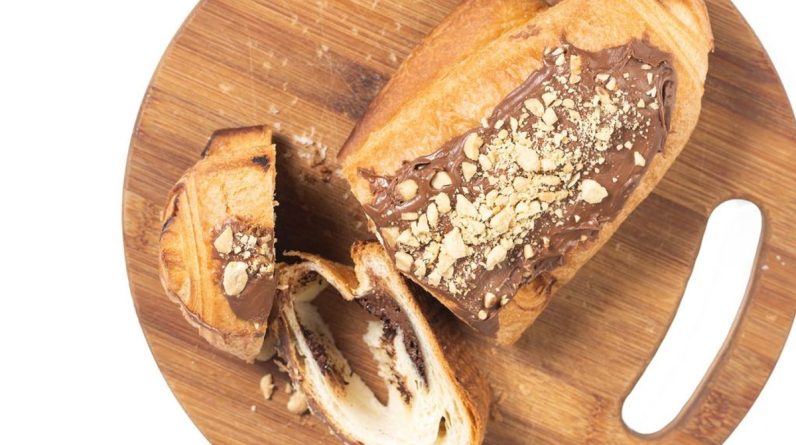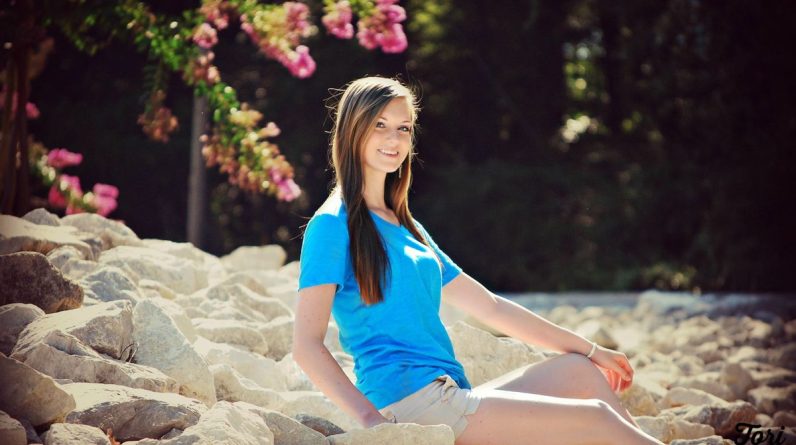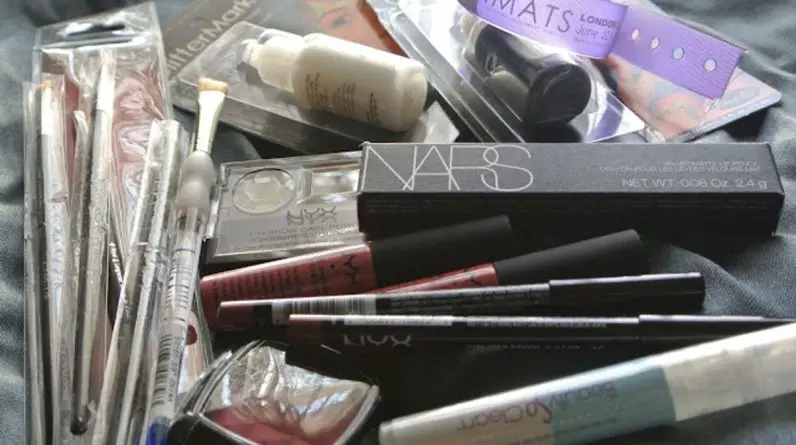The standards of beauty are dynamic, continuously evolving with time and across cultures. This article, ‘Exploring the Ever-Changing Definitions of Beauty’, delves into the historical, psychological, and social aspects of beauty norms. It examines how these standards have been shaped and reshaped throughout history, the impact they have on individuals’ self-esteem and identity, and the movement towards embracing imperfection and diversity in defining beauty.
Contents
- 1 The Historical Evolution of Beauty Standards
- 2 Psychological Impacts of Societal Beauty Norms
- 3 The Intersection of Beauty and Identity
- 4 Wabi-Sabi and the Beauty of Imperfection
- 5 Advocating for Inclusive and Realistic Beauty Ideals
- 6 Conclusion
- 7 Frequently Asked Questions
- 7.1 How have beauty standards historically impacted individual self-esteem?
- 7.2 In what ways can societal beauty standards lead to self-comparison?
- 7.3 What body image concerns are commonly struggled with due to beauty standards?
- 7.4 How can one define beauty on their own terms, outside of societal pressures?
- 7.5 What actions can be taken to promote self-acceptance and realistic beauty ideals?
- 7.6 How does the concept of Wabi-Sabi contrast with Western perfectionism?
Key Takeaways
- Beauty standards have historically evolved, influenced by cultural shifts and technological advancements, reflecting society’s changing values.
- Societal beauty norms significantly impact self-esteem and body image, often leading to comparison and negative self-perception, but can be countered by resilience and resistance.
- Identity factors such as gender, race, and age play a crucial role in the beauty discourse, with personal narratives and diversity challenging long-standing stereotypes.
- The philosophy of Wabi-Sabi, embracing imperfection, contrasts with Western perfectionism, offering a path to self-acceptance through the appreciation of simplicity and natural beauty.
- Advocacy for inclusive and realistic beauty ideals is growing, with education, body positivity movements, and media literacy playing key roles in shaping healthier societal standards.
The Historical Evolution of Beauty Standards

From Ancient Ideals to Modern Media
The concept of beauty has undergone a profound transformation from the ancient world to the digital age. Historically, beauty standards were localized and often tied to societal roles and statuses. In ancient Greece, for example, the ideal of a harmonious body and mind was paramount, while in Renaissance Europe, full-figured forms were celebrated as symbols of affluence and fertility.
Today, the proliferation of modern media has globalized beauty ideals, creating a more homogenous vision of attractiveness. This shift is evident in the way beauty and fashion trends rapidly disseminate through social platforms, influencing perceptions worldwide. The 2023 Beauty Trends, as seen on various websites, reflect a blend of retro and futuristic aesthetics, with ’90s center parts and 3D embellishments making a comeback.
The relentless pursuit of these ever-evolving beauty standards can lead to a constant state of comparison, impacting self-esteem and body image.
It’s crucial to recognize the role of technology not just in disseminating beauty standards but also in creating them. With tools like photo filters and editing software, the line between reality and aspiration becomes increasingly blurred. As we navigate this landscape, it’s important to foster resilience and promote a more inclusive definition of beauty that celebrates diversity and individuality.
Cultural Shifts and Global Influences
The concept of beauty is not static; it is a reflection of the ever-evolving cultural landscapes across the globe. Cultural shifts have played a pivotal role in redefining what is considered beautiful. As societies intermingle and global influences become more pronounced, the traditional boundaries of beauty are being redrawn.
Globalization has facilitated a cross-pollination of beauty ideals, where Western standards are blended with Eastern philosophies, and vice versa. This fusion is evident in the growing popularity of holistic wellness trends that emphasize a balance between physical appearance and mental health.
- Mindfulness practices
- Fitness routines
- Healthy eating habits
The amalgamation of diverse beauty standards is creating a more inclusive landscape where individuals can find representation and resonance.
The digital age has further accelerated this change, with social media platforms showcasing a myriad of beauty expressions. From the rise of K-beauty to the embrace of natural hair movements, the internet has become a battleground for challenging and reshaping beauty norms.
The Role of Technology in Redefining Aesthetics
The advent of technology has revolutionized the way we perceive and interact with beauty. Digital platforms have become the new canvas for self-expression, allowing individuals to share and consume beauty-related content at an unprecedented scale. From beauty editing apps that offer instant makeovers to social media channels that broadcast the latest trends, technology has democratized access to beauty ideals.
- Beauty, fashion, hair, makeup, nails, weight loss content.
- Recent posts on weight loss tips, beauty editing, and fashion drawing.
- Popular posts on beauty trends and personal style.
However, this ease of access also comes with its challenges. The constant exposure to highly curated and often unrealistic images can distort our perception of beauty, leading to a phenomenon known as the ‘comparison trap‘.
The integration of technology in beauty has not only altered aesthetics but also the very definition of what is considered beautiful. It has shifted the focus from natural attributes to digitally enhanced personas, raising questions about authenticity and self-worth.
Psychological Impacts of Societal Beauty Norms

Self-Esteem and Body Image
In today’s society, the pressure to conform to beauty standards is more prevalent than ever. Our survey titled ‘Self Esteem and
Beauty Standards’ delves into the effects of societal norms on individual self-esteem. Participants are asked thought-provoking questions about how beauty standards influence their perception of self-worth. From the influence of media representation to personal experiences, the survey uncovers the diverse ways in which beauty standards impact individuals.
With questions ranging from self-comparison to body image concerns, the survey aims to shed light on the complex relationship between beauty ideals and self-esteem. Participants are also encouraged to share their own definitions of beauty and suggestions for promoting self-acceptance in a world inundated with narrow beauty standards. Overall, ‘Self Esteem and Beauty Standards’ seeks to initiate dialogue on the importance of reevaluating societal norms to foster resilience and a healthier self-image.
The survey results highlight a significant correlation between societal beauty norms and self-esteem issues. Many respondents express a desire for a more inclusive definition of beauty that embraces individual uniqueness rather than a one-size-fits-all ideal.
The following table summarizes key findings from the survey:
| Impact on Self-Esteem | Percentage |
|---|---|
| Positive Impact | 10% |
| Negative Impact | 75% |
| No Impact | 15% |
The Comparison Trap: Social Media and Peer Influence
In the digital age, the proliferation of beauty, fashion, and lifestyle content across social media platforms has created a relentless comparison trap. Users are bombarded with images and videos showcasing the latest in hair, makeup, and weight loss trends, often leading to a distorted sense of self-worth. The pressure to emulate these often-unattainable standards can significantly impact one’s self-esteem.
The constant exposure to idealized images has made it challenging for individuals to appreciate their unique beauty and resist the urge to compare themselves to others.
The following points highlight the key factors contributing to the comparison trap:
- Media representation and celebrity culture
- Peer pressure and the desire for social acceptance
- Personal experiences and family expectations
Our survey results indicate that a majority of participants feel pressured to conform to societal beauty standards, with many citing social media as a major influence. The table below summarizes the responses:
| Impact on Self-Esteem | Positive | Negative | No Impact |
|---|---|---|---|
| Media Representation | 15% | 60% | 25% |
| Social Media | 10% | 70% | 20% |
| Peer Pressure | 20% | 50% | 30% |
| Family Expectations | 25% | 40% | 35% |
| Personal Experiences | 30% | 45% | 25% |
It is clear that the journey to overcoming negative self-perception is complex, but it begins with acknowledging the pervasive influence of social media and peer influence.
Resilience and Resistance: Overcoming Negative Self-Perception
In the face of pervasive beauty standards, resilience and resistance are key to fostering a more inclusive and positive self-image. The journey to overcoming negative self-perception often begins with self-reflection and a conscious decision to reject unrealistic ideals.
Self-acceptance is a crucial step in this process. It involves embracing one’s unique qualities and rejecting the notion that beauty is a one-size-fits-all concept. To aid in this journey, consider the following steps:
- Identify and challenge negative thoughts about your appearance.
- Surround yourself with positive influences and affirmations.
- Seek out diverse representations of beauty that resonate with you.
- Practice self-care and kindness towards your body.
Let’s challenge the status quo and redefine beauty on our own terms! Your insights can be the catalyst for change.
The table below reflects the sentiments of individuals regarding beauty standards and self-esteem, based on a recent survey:
| Question | Positive Impact | Negative Impact | No Impact |
|---|---|---|---|
| How do beauty standards impact your self-esteem? | 20% | 70% | 10% |
| Do you feel pressured to conform to societal beauty standards? | 65% | 35% | – |
By understanding the psychological impacts of societal beauty norms, we can begin to dismantle them and build a foundation for healthier self-perception.
The Intersection of Beauty and Identity

Gender, Race, and Age in the Beauty Discourse
The discourse around beauty is deeply intertwined with aspects of gender, race, and age, each playing a pivotal role in shaping what is deemed attractive in society. Gender norms often dictate the beauty routines and expectations placed upon individuals, while racial characteristics can influence the perceived desirability within different cultures. Age, too, is a significant factor, with youth frequently glorified and aging stigmatized.
Beauty standards are not only about the physical but also about the identity and self-expression of individuals. The following points highlight the complexity of beauty as it relates to identity:
- The impact of gender expectations on personal grooming and aesthetic choices
- Racial diversity and the push for representation in beauty ideals
- The age bias in beauty and the growing movement to celebrate all stages of life
We must recognize that beauty is a spectrum that encompasses a multitude of identities and expressions. It is a reflection of society’s values at a given time, and as such, it is ever-evolving. To foster a more inclusive understanding of beauty, it is crucial to challenge and expand the narrow definitions that have historically dominated the discourse.
Personal Narratives: Defining Beauty on One’s Own Terms
In the quest to define beauty, personal narratives emerge as powerful testimonies that challenge conventional norms. Each individual’s story is a unique tapestry of experiences, beliefs, and self-perceptions that collectively broaden the definition of beauty beyond traditional standards.
- The survey on ‘Self Esteem and Beauty Standards’ reveals the intimate relationship between societal pressures and personal self-esteem.
- Participants reflect on how they define beauty, shedding light on the diverse and multifaceted nature of aesthetic appreciation.
- Suggestions for promoting self-acceptance highlight the need for a shift towards more inclusive beauty paradigms.
Embracing our personal narratives allows us to construct a more inclusive and positive self-image. Let’s challenge the status quo and redefine beauty on our own terms!
The table below encapsulates the key concerns and beliefs expressed by individuals in the survey:
| Concerns | Percentage |
|---|---|
| Weight | 60% |
| Skin | 45% |
| Hair | 30% |
| Height | 25% |
| Facial Features | 40% |
This data underscores the prevalence of body image concerns and the urgency to address them through education, media literacy, and the promotion of diverse beauty standards.
Challenging Stereotypes and Embracing Diversity
In the quest to challenge stereotypes and embrace diversity, it’s crucial to recognize that beauty transcends narrow societal norms. Diverse representations in media and fashion are not just trends; they are affirmations of individuality and inclusivity. By highlighting a variety of body types, skin tones, and personal styles, we foster a more holistic understanding of beauty.
- Encourage diverse casting in media and fashion shows
- Promote stories and images that reflect a wide range of beauty standards
- Support brands and initiatives that prioritize inclusivity
Embracing diversity means acknowledging that beauty is not a monolith but a spectrum that includes all of us.
The conversation around beauty is evolving, and with it, the recognition that everyone has the right to feel beautiful, regardless of how they fit into traditional standards. It’s about shifting the focus from fitting in to standing out, and celebrating the unique qualities that make each person special.
Wabi-Sabi and the Beauty of Imperfection

Understanding Wabi-Sabi: A Philosophical Perspective
Wabi-Sabi represents a philosophy that values authenticity over artificial perfection and embraces the transitory nature of all things. It is a Japanese aesthetic rooted in Zen Buddhism that finds beauty in the impermanent, the imperfect, and the incomplete. Wabi-Sabi reminds us to appreciate the profound simplicity and understated elegance in the world around us.
The essence of Wabi-Sabi can be distilled into a few key principles:
- Acceptance of the natural cycle of growth, decay, and death
- Reverence for the authentic and unrefined
- Appreciation for the beauty of natural objects and processes
Wabi-Sabi provides an elegant way to describe what is natural and pure, allowing us to recognize the beauty of any substance or being in its most natural and original form.
In contrast to Western cultural aesthetics, which often lean towards an emphasis on perfection and the pursuit of flawlessness, Wabi-Sabi offers a different lens through which to view the world. It encourages us to find grace in the authentic imperfections and transience that are an inherent part of our human experience.
Contrasting Western Perfectionism with Eastern Aesthetics
The concept of beauty in Western cultures has often been synonymous with perfection, a relentless pursuit of flawlessness that permeates various aspects of life, including beauty, fashion, and personal grooming. This ideal is evident in the constant stream of makeup tutorials, celebrity skincare tips, and the latest beauty trends that flood our media channels.
In stark contrast, Eastern aesthetics, particularly the Japanese philosophy of Wabi-Sabi, embrace the beauty found in the natural progression of life and its imperfections. It’s a perspective that finds grace in the ‘perfectly imperfect’ and encourages a more authentic and less materialistic approach to beauty. Here are some key differences:
- Western beauty often celebrates the new, the shiny, and the unblemished.
- Eastern aesthetics appreciate the beauty in aging, wear, and the patina that comes with time.
- The West tends to fixate on the artificial and the constructed, while the East values the organic and the naturally occurring.
Embracing Wabi-Sabi means appreciating the beauty in a rustic finish, the charm of a well-loved object, and the serenity that comes from accepting the transitory nature of all things.
This philosophical divergence impacts not only our perception of beauty but also how we live our lives, from the clothes we wear to the way we design our homes. It’s a call to step back from the relentless pursuit of the new and the flawless and to find contentment in the beauty that surrounds us every day.
Incorporating Wabi-Sabi into Daily Life and Self-Acceptance
Incorporating the principles of Wabi-Sabi into daily life begins with a shift in perspective. Embrace Who You Are; recognize that your imperfections are not flaws but distinctive marks of your individuality. Each aspect of your personal history, from the laugh lines to the unique quirks, contributes to your unique beauty.
To practice Wabi-Sabi is to appreciate the beauty in the ‘here and now’ and to find elegance in the imperfect. It’s about making peace with the transient nature of life and valuing the signs of aging as evidence of a life fully lived. Here are some steps to integrate Wabi-Sabi into your life:
- Accept yourself as you are, with all your idiosyncrasies.
- See the world with a lens that finds charm in asymmetry and wisdom in the unrefined.
- Take things as they come and appreciate the present moment.
Wabi-Sabi invites us to view our lives as a work of art, one that unfolds over time. It’s a sanctuary for authenticity in a world often fixated on idealized standards.
By adopting these practices, we can achieve a greater appreciation of life and a higher level of happiness, fostering a more profound connection with ourselves and the world around us.
Advocating for Inclusive and Realistic Beauty Ideals

The Role of Education and Body Positivity Movements
The journey towards embracing diverse beauty ideals is significantly influenced by education and body positivity movements. These initiatives play a crucial role in challenging the narrow definitions of beauty that pervade our society. By promoting an inclusive range of beauty standards, they encourage individuals to appreciate the uniqueness of their own bodies.
- Education on body positivity aims to dismantle harmful beauty norms and replace them with messages of self-love and acceptance.
- Promotion of diverse beauty standards in media and advertising helps to broaden the public’s perception of beauty.
- Media literacy programs are essential for teaching individuals to critically analyze and question the unrealistic images they are bombarded with daily.
The collective effort to redefine beauty standards is not just about changing perceptions; it’s about creating a culture that values every individual’s well-being over superficial aesthetics.
The impact of these movements is evident in the growing number of people who reject the pressure to conform to traditional beauty standards. Surveys and studies consistently reveal a desire for change, with many expressing the need for more representation and mental health support in the face of rigid beauty norms.
Media Literacy and Representation: Shaping New Norms
In the age of information overload, media literacy becomes a crucial skill for discerning the realistic from the idealized in beauty standards. By educating individuals on how to critically evaluate media content, we empower them to recognize and resist unrealistic portrayals of beauty. This education can take many forms, from classroom curricula to online resources.
italicsUnderstanding the role of representation in media is key to shaping new beauty norms. A diverse range of beauty narratives can help to broaden the definition of what is considered beautiful. Here are some steps to promote inclusive representation:
- Encourage the creation and sharing of content that reflects a wide spectrum of beauty.
- Support platforms and creators who prioritize diversity in their beauty and fashion content.
- Advocate for transparency in advertising and the use of unaltered images.
By fostering a media landscape that values authenticity and diversity, we can begin to dismantle the narrow definitions of beauty that have long dominated our screens and magazines.
Collective Action: How Society Can Promote Healthier Beauty Standards
The journey towards embracing healthier beauty standards is a collective endeavor that requires the participation of all societal sectors. Education on body positivity and the promotion of diverse beauty standards are pivotal in this transformation. By fostering media literacy programs and providing mental health support, we can begin to dismantle the harmful effects of narrow beauty ideals.
Media representation plays a crucial role in shaping perceptions of beauty. A concerted effort to showcase a wide range of beauty narratives can significantly alter the landscape of societal norms. Here are some steps that can be taken:
- Encouraging the inclusion of diverse body types, skin colors, ages, and abilities in media and advertising.
- Supporting creators and influencers who advocate for inclusivity and realistic portrayals of beauty.
- Implementing educational programs that teach critical thinking about media messages and the impact of beauty standards.
We must challenge the status quo and redefine beauty on our own terms. It’s time to shift the focus from narrow definitions to a more inclusive and positive self-image.
The path to change is not only about altering external narratives but also about internal reflection and resilience. As individuals and communities, we have the power to influence and inspire a movement towards a world where beauty is celebrated in all its forms.
Join us in the movement to redefine beauty standards by embracing diversity and authenticity. Our platform is dedicated to showcasing a variety of beauty ideals that reflect the real world we live in. Let’s celebrate every shape, size, color, and unique feature together. Visit our website to explore inspiring content, from empowering makeup tutorials to fashion tips that cater to all. Take a stand with us—because beauty is not a one-size-fits-all. Click here to be part of the change and advocate for inclusive beauty today!
Conclusion
As we navigate the ever-evolving landscape of beauty standards, it becomes clear that the definitions of beauty are as diverse as humanity itself. From the ancient philosophy of Wabi Sabi, which finds elegance in imperfection and simplicity, to the modern pressures exerted by media and societal expectations, our perception of beauty is constantly being shaped and reshaped. Our survey ‘Self Esteem and Beauty Standards’ has highlighted the profound impact these standards have on individual self-esteem, prompting a much-needed dialogue on the importance of redefining beauty norms. It is imperative that we challenge the status quo and promote a more inclusive vision of beauty—one that celebrates the unique mosaic of traits that each person brings to the table. By doing so, we can foster a culture of self-acceptance and empower individuals to define beauty on their own terms, creating a ripple effect of positive change in our society.
Frequently Asked Questions
How have beauty standards historically impacted individual self-esteem?
Historically, beauty standards have often dictated what is considered attractive, leading individuals to compare themselves to these ideals. This comparison can negatively impact self-esteem when people feel they do not measure up to the societal norms of beauty.
In what ways can societal beauty standards lead to self-comparison?
Societal beauty standards can lead to self-comparison when individuals use these standards as benchmarks for their own appearance. This is exacerbated by media representation and peer pressure, often resulting in feelings of inadequacy or low self-worth.
What body image concerns are commonly struggled with due to beauty standards?
Common body image concerns include weight, skin, hair, height, and facial features. These concerns are often magnified by narrow beauty standards portrayed in the media and the pressure to conform to these standards.
How can one define beauty on their own terms, outside of societal pressures?
Defining beauty on one’s own terms involves recognizing and valuing personal qualities, experiences, and diversity. It’s about embracing individuality and rejecting the narrow definitions of beauty imposed by society.
What actions can be taken to promote self-acceptance and realistic beauty ideals?
Promoting self-acceptance and realistic beauty ideals can be achieved through education on body positivity, promoting diverse beauty standards, media literacy programs, and providing mental health support.
How does the concept of Wabi-Sabi contrast with Western perfectionism?
Wabi-Sabi is a Japanese aesthetic that finds beauty in imperfection and simplicity, contrasting with Western perfectionism, which often values flawlessness and the pursuit of idealized beauty standards.







